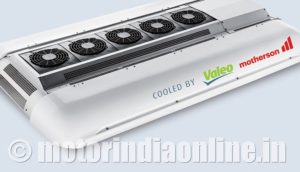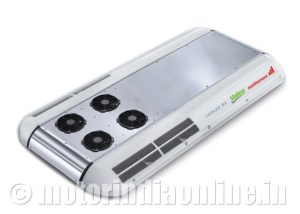As a complete solutions provider for bus air-conditioning in the country, Valeo Motherson has a wide range of HVAC products that are tailor-made for Indian climatic conditions. Drawing on the technical expertise from its parent company Valeo, a global leader in the supply of compressors and integrated systems for cars and CVs, the company is aggressively expanding its customer base with innovative products and vast service network.

COO at Valeo Motherson Mr. Cyril Xavier spoke to MOTORINDIA on major trends and recent developments around bus air-conditioning in India, and how added cost out of air-conditioning is nominal as against the actual outcomes. Excerpts from the interview:
How is bus air-conditioning evolving in India? Any emerging trends and transformations that has redefined the industry in this regard?
The evolution of air-conditioning in the domestic bus market is slow and not rapid as desirable for the industry. The overall CAGR remains at 15 per cent for the past five years. The A/C bus market needs ‘revolution’ and not ‘evolution’, since evolution began as early as in year 2001 itself. Unless we reach A/C penetration of about 50 per cent in the entire bus industry, we can neither say that people have experienced the air-conditioned travel nor that the bus travel has been redefined.
How does air-conditioning add value to bus travel? How far does it improve travelers’ experience and help retain commuters with bus transport?
The criteria for ‘value’ here is affordable, comfortable and accessible bus transportation. The difference between an air-conditioned and non-A/C bus is slender, i.e., the overall cost increase due to air-conditioning is just one tenth of the overall cost of the bus. This is very nominal. While the added comfort for passengers is phenomenal, the travel is noise-less and dust-free. Of course, no value-addition comes free. It has to be weighed against the benefits.
How is the market response and acceptance for HVAC systems in India? Can you elaborate on your company’s sales performance in OEM and non-OEM categories in recent times?
Response and acceptance is a based on “Push-Pull” mechanism. As HVAC manufacturers, we push OEM’s to buy more and non-OEM’s (STU’s and private bus fleet operators) pull from us thereby A/C buses becomes a trend setter in new areas and markets. The transformation of air-conditioning in passenger cars in the country has taken just two decades, starting from 1995. Today there is no car maker rolling out non-A/C cars unlike before. Until this kind of transformation happens in buses, the growth will remain gradual and not steep. In 2016-17, we produced 3,300 AC units, and followed 3,900 units the following 2017-18 period. About 60 per cent of the sales rests with OEMs.
How does ‘hybridization’ and ‘electrification’ of buses impact HVAC systems?
We have already demonstrated our abilities in this regard by supplying Hybrid A/C units “Revo E” to Volvo Buses India in 2016. Last year, we have supplied 40 units of electric “Revo E Global” A/C’s for Tata Motors’ e-bus project. Both these buses are currently running in Mumbai and Navi Mumbai. We are currently working on to reduce refrigerant reduction to 50% than conventional one and reduce the weight of the units to improve fuel efficiency.
How promising is the future? What are your goals or vision for the next 5 years?
Future is indeed bright. We shall venture into all commercial vehicles with our “HVAC” and establish our leadership in India like in other countries. By 2022, we shall double our current volumes sales in the country.
“The bus air-conditioning market needs ‘revolution’ and not ‘evolution’. We need to achieve at least 50 per cent penetration in the entire population of buses to redefine bus travel in the country.
– Mr. Cyril Xavier
Valeo Motherson introduces CC 355 Air-Con for Buses
An upgraded iteration of its existing CC 350 bus air-conditioning system, the CC 355 has been introduced in India with aluminum coils for evaporator and condenser in place of copper coils. This eliminates chances of any premature failure and leakage issues, while resulting in less use of refrigerant by up to 50 per cent. The 40 kW system is also more compact and weigh less, says the manufacturer.

